Military History

Navigate this page
| Revolutionary War | Civil War | French & Indian War | World War II |
|---|
French and Indian War
William Morrison was the son of Robert Morrison, the immigrant who first came to North Bridgewater. He married Sarah Montgomery. History says that he was a navigator and fought in the French and Indian War. He was taken prisoner aboard the ship Captain Mayor in the Bay of Fundy off of Nova Scotia on June 12, 1758. Only a month later, the British would capture Fort Louisbourg just around Nova Scotia from the Bay of Fundy. He died in prison in Quebec. Source: NEHGS July 1930
French and Indian War Timeline
Why the Captain Mayor was in the Bay of Fundy is unknown. Only the port of Royal Annapolis on Nova Scotia was held by the British. The rest of Nova Scotia and New Brunswick was held by the French. Possibly they were bringing stores to Royal Annapolis.
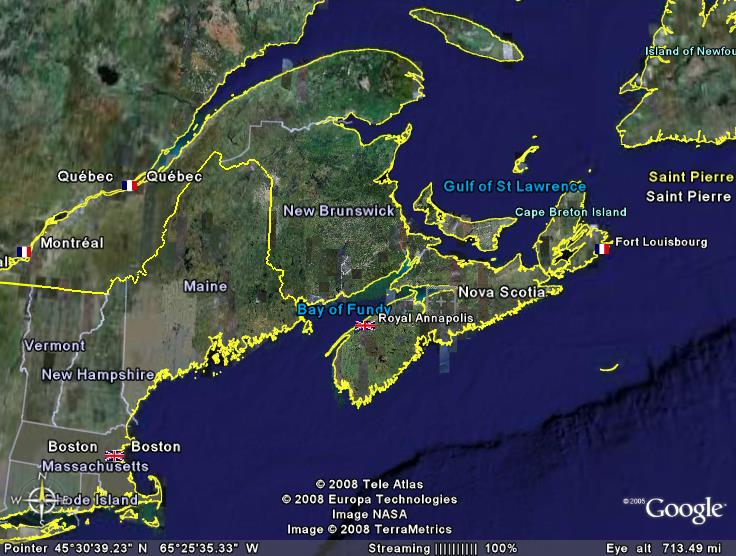
The French and Indian War (1754–1763) was the North American chapter of the Seven Years' War. The name refers to the two main enemies of the British: the royal French forces and the various American Indian forces. The conflict, the fourth such colonial war between the kingdoms of France and Great Britain, resulted in the British conquest of all of New France east of the Mississippi River, as well as Spanish Florida. The outcome was one of the most significant developments in the persistent Anglo-French Second Hundred Years' War. To compensate its ally, Spain, for its loss of Florida, France ceded its control of French Louisiana west of the Mississippi.
1607 English settle in Jamestown
1600s
French build fur-trade outposts in Canada
English settle Atlantic coastline
1750s
England and France dispute land claims in Canada and Ohio Valley
1754
July 3 English troops under Colonel George Washington march on Fort Duquesne: French victory
1755
July 9 English troops under General Edward Braddock march on Fort Duquesne: French victory.
1756
William Pitt becomes English Prime Minister
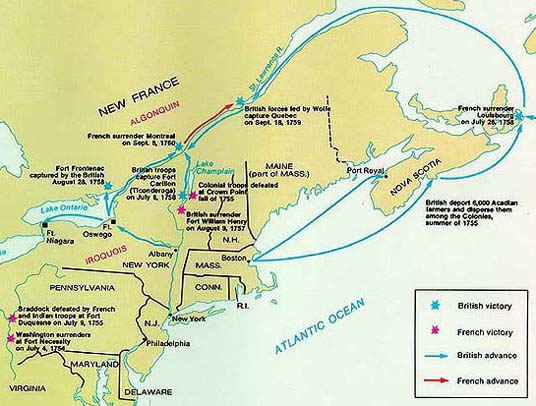
1757
August 9 French take Fort William Henry
1758
June 12 William Morrison taken prisoner in the Bay of Fundy
July 8 French capture Fort Ticonderoga
July 26 English capture Louisbourg
August 27 English capture Fort Frontenac
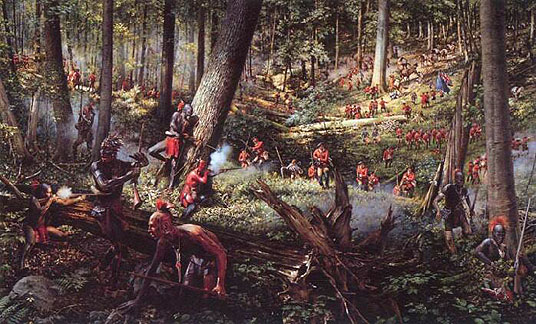
1759
July 25 English capture Fort Niagara
July 26 French abandon Fort Ticonderoga
September 13 English capture Quebec
1760
September 8 English capture Montreal
1763
English and French sign Treaty of Paris
Site of Colonial Histories
Many links to the French and Indian War
Revolutionary War
Massachusetts Soldiers and Sailors in the War of the Revolution Pg 44-45 and 64-69
There are 13 Morisons and 46 Morrisons listed in this book of the revolutionary war. Click on the link below to bring up these pages.
Related to Robert Morrison of Bridgewater was:
Grandson Robert Morison (b. 1751) of Falmouth served in Captain William Cobb's Company in 1779.
Massachusetts Soldiers and Sailors in the War of the Revolution
Maine Soldiers and Sailors of the Revolutionary War
This book listed William of Farmington who married Hannah.
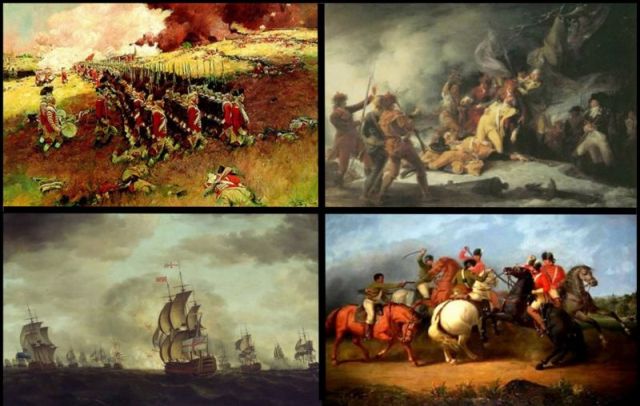
Soldiers, Sailors,and Patriots of the Revolutionary War - Maine Pg 250-251
There are five Morrisons listed in this book. Two were related to Robert Morrison of Bridgewater.
Morrison,Robert,MA; b N.Bridgewater, MA 1751; r New Casco; Capt Cobb's co 1779; d Readfield 1808; m. Dorcas;
Morrison, William; r Middleboro, MA; bur Farmington; m Hannah, m Farmington 1777;
Morrison, William, Jr. MA; b Bridgewater, MA 1749; d Chesterville 1826; b Webster Cem; m Hannah; m in 1772 (same as previous entry)
Soldiers, Sailors, and Patriots of the Revolutionary War-Maine
Abstracts of the Revolutionary War Pension Files pg 2427
There are many Morrisons listed in this book. Only the first page is in the link below. Will try and get the other pages later. Andrew Morrison through John Morrison is listed.
Abstract Pension Files
Timeline of the American Revolutionary War
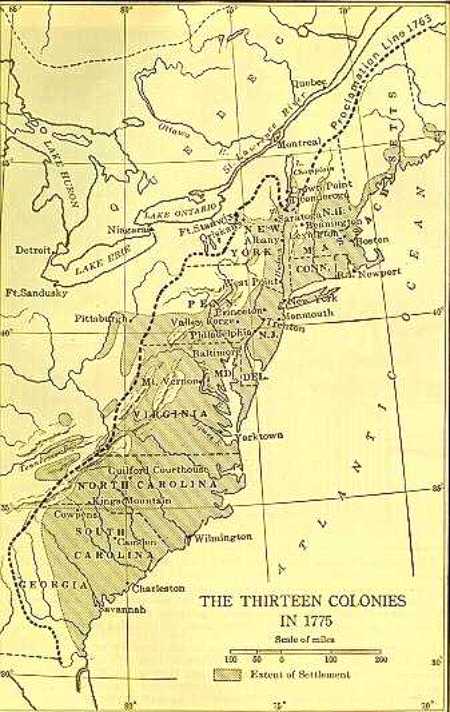
Events leading up to the War
The French and Indian War (1754-63)
The Sugar Act (4/5/1764)
The Stamp Act (3/22/1765)
Patrick Henry's "If This Be Treason" speech (5/29/1765)
The Stamp Act Congress (10/7-25/1765)
Townshend Act (6/29/1767)
Disturbances in Boston
The Boston Massacre (3/5/1770)
The Boston Tea Party (12/16/1773)
Boston Port Act (part of the Intolerable Acts) (3/31/1774)
Administration of Justice Act (part of the Intolerable Acts) (5/20/1774)
Massachusetts Government Act (part of the Intolerable Acts) (5/20/1774)
Quartering Act of 1774 (part of the Intolerable Acts) (6/2/1774)
Quebec Act (part of the Intolerable Acts) (6/22/1774)
The First Continental Congress (Philadelphia, 9/5-10/26/1774)
Battle of Point Pleasant, Virginia (disputed as to whether it was a battle of the American Revolution or the culmination of Lord Dunmore's War) (10/10/1774)
--------------------------------------------------------------------------------
1775: The War Begins
The Rides of Paul Revere and William Dawes (4/18)
The Battles of Lexington and Concord (4/19)
Ethan Allen and the Green Mountain Boys Seize Fort Ticonderoga (5/10)
The Second Continental Congress (met in Philadelphia, 5/10)
Washington named Commander in Chief (6/15)
Battle of Bunker Hill (fought on Breed's Hill) (6/17)
Montgomery captures Montreal for Americans (11/13)
Benedict Arnold's failed attack on Quebec (12/30)
--------------------------------------------------------------------------------
1776: The Year of Independence
Paine's "Common Sense" published (1/15)
Patriot triumph at Moore's Creek, NC (2/27)
Continental fleet captures New Providence Island in the Bahamas (3/3)
The British evacuate Boston (3/17)
Richard Henry Lee proposes Independence (6/7)
Patriots decisively defeat the British Navy at Fort Moultrie, SC (6/28)
Declaration of Independence adopted (7/4)
Declaration of Independence signed (8/2)
Arrival of 30,000 British troops in New York harbor
British win the Battle of Long Island (Battle of Brooklyn) (8/27-30)
British occupy New York City (9/15)
British win the Battle of Harlem Heights (9/16)
Benedict Arnold defeated at Lake Champlain (10/11)
American retreat at the Battle of White Plains (10/28)
British capture Fort Washington, NY and Fort Lee, NJ (11/16)
Washington Crosses the Delaware and captures Trenton (12/26)
--------------------------------------------------------------------------------
1777: The War for the North
Washington wins the Battle of Princeton (1/3)
Washington winters in Morristown, NJ (1/6-5/28)
Flag Resolution (flag possibly designed by Hopkinson, likely sewn by Betsy Ross) (6/14)
St. Clair surrenders Fort Ticonderoga to the British (7/5)
Lafayette arrives in Philadelphia (7/27)
Americans under Herkimer defeat the British under St. Leger at Fort Stanwix, in the Mohawk Valley in Oriskany, New York (8/6)
American Militia under General Stark triumph over Hessians at Bennington (8/16)
British General Howe lands at Head of Elk, Maryland (8/25)
British success at the Battle of Brandywine, PA (9/11)
Rain-out at the Battle of the Clouds, PA (9/16)
Burgoyne checked by Americans under Gates at Freeman's Farm, NY (9/19)
Paoli Massacre, PA (9/21)
British under Howe occupy Philadelphia (9/26)
Americans driven off at the Battle of Germantown (10/4)
Burgoyne loses second battle of Freeman's Farm, NY (at Bemis Heights) (10/7)
Burgoyne surrenders to American General Gates at Saratoga, NY (10/17)
Hessian attack on Fort Mercer, NJ repulsed (10/22)
British capture Fort Mifflin, PA (11/16)
Americans repulse British at Whitemarsh, PA (12/5-7)
The Winter at Valley Forge, PA (12/19/77-6/19/78)
--------------------------------------------------------------------------------
1778: Valley Forge and the French Alliance
The French Alliance (2/6)
British General William Howe replaced by Henry Clinton (3/7)
Van Steuben arrives at Valley Forge
Battle of Barren Hill, PA (5/20)
Washington fights to a draw at Battle of Monmouth (6/28)
George Rogers Clark captures Kaskaskia, a French village south of St. Louis (7/4)
French and American forces besiege Newport, RI (8/8)
British occupy Savannah, GA (12/29)
--------------------------------------------------------------------------------
1779: The War Spreads
Militia beat Tories at Kettle Creek, GA (2/14)
American George Rogers Clark captures Vincennes on the Wabash in the Western campaign (2/25)
Fairfield, CT, burned by British (7/8)
Norwalk, CT, burned by British (7/11)
American "Mad" Anthony Wayne captures Stony Point, NY (7/15-16)
"Light Horse" Harry Lee attacks Paulus Hook, NJ (8/19)
John Paul Jones, aboard the Bonhomme Richard, captures British man-of-war Serapis near English coast (9/23)
The Tappan Massacre ("No Flint" Grey kills 30 Americans by bayonet) (9/28)
American attempt to recapture Savannah, GA fails (10/9)
Coldest Winter of the war, Washington at Morristown, NJ
--------------------------------------------------------------------------------
1780: The Campaign for the South
British capture Charleston, SC (5/12)
British crush Americans at Waxhaw Creek, SC (5/29)
Patriots rout Tories at Ramseur's Mill, NC (6/20)
French troops arrive at Newport, RI, to aid the American cause (7/11)
Patriots defeat Tories at Hanging Rock, SC (8/6)
British rout Americans at Camden, SC (8/16)
Benedict Arnold's plans to cede West Point to the British discovered (9/25)
King's Mountain, SC: battle lasted 65 minutes. American troops led by Isaac Shelby and John Sevier defeated Maj. Patrick Ferguson and one-third of General Cornwallis' army. (10/7)
Washington names Nathanael Greene commander of the Southern Army (10/14)
--------------------------------------------------------------------------------
1781: All But Done
Mutiny of unpaid Pennsylvania soldiers (1/1)
Patriot Morgan overwhelming defeated British Col. Tarleton at Cowpens, SC (1/17)
The Battle of Cowan's Ford, Huntersville, NC (2/1)
Articles of Confederation adopted (3/2)
British win costly victory at Guilford Courthouse, NC (3/15)
Greene defeated at Hobkirk's Hill, SC (4/25)
Corwallis clashed with Greene at Guilford Courthouse, NC (5/15)
Americans recapture Augusta, GA (6/6)
British hold off Americans at Ninety Six, SC (6/18)
"Mad" Anthony Wayne repulsed at Green Springs Farm, VA (7/6)
Greene defeated at Eutaw Springs, SC (9/8)
French fleet drove British naval force from Chesapeake Bay (9/15)
Cornwallis surrounded on land and sea by Americans and French and surrenders at Yorktown, VA (10/19)
--------------------------------------------------------------------------------
1782 and Beyond
Lord North resigned as British Prime Minister (3/20/82)
British evacuated Savannah, GA (7/11/82)
British sign Articles of Peace (11/30/82)
British leave Charleston, SC (12/14/82)
Congress ratifies preliminary peace treaty (4/19/83)
Treaty of Paris (9/3/83)
British troops leave New York (11/25/83)
Washington Resigns as Commander (12/23/83)
U.S. Constitution ratified (9/17/87)
Civil War
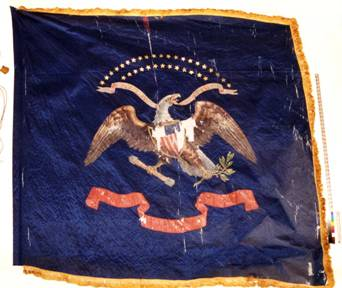
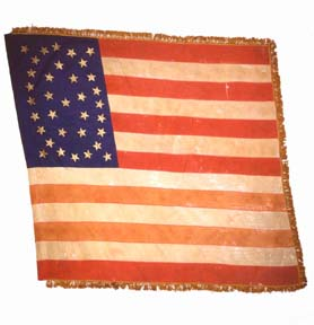
Navigate Civil War
| Maine 3rd Infantry | Civil War Prisons | Anson Service | Books Online |
| Manassas | Gettysburg | Maine State Archives | Peter Mirgain |
Third Maine Regiment Infantry
Overview of Regiment History
Recruited mostly from the Kennebec lumbermen; the men were of a large, powerful type, their average weight in one company being 170 pounds. The regiment was organized at Augusta, arriving at Washington June 7, 1861. It fought at First Bull Run, and a year later was engaged in another bloody contest on the same field. During 1862 it served in Birney's Brigade of Kearny's Division; it was in that command at Fair Oaks, where it made a gallant and successful charge, but lost nearly one-third of the number engaged; the loss was 8 killed, 71 wounded, and 3 missing. It participated in all the battles and marches of the Third Corps, becoming sadly reduced in number by deaths, wounds, and the sickness incidental to arduous campaigns. When it entered the field at Gettysburg, it numbered 14 officers and 196 rifles; of this number it lost 18 killed, 59 wounded, and 45 missing. Under command of Colonel Lakeman, it rendered good service in that battle; on the second day, in company with Berdan's Sharpshooters, it made an advance outside the lines which developed the enemy's position and elicited timely warning of the attack on Sickles' Corps. The tenacity with which the Third Maine held that skirmish line at Gettysburg is worthy of note. The regiment did some more hard fighting in the Wilderness campaign, during which it fought in Hancock's Second Corps. Lt. Col. Edwin Burt was killed at the Wilderness, and Major William C. Morgan at the North Anna. While in line at Cold Harbor, the regiment was ordered home, and the remaining recruits transferred to the Seventeenth Maine.
See this site dedicated to the Third Maine Infantry
A Civil War Reenactment Group
Third Maine Regiment Infantry Timeline
Annual Report of the Adjutant General of the State of Maine 1866.
Two page summary of the 3rd Maine Regiment. Also, includes second regiment report.
June 4-7, 1861
Regiment is organized at Augusta, Maine, to serve three years, and left the next day for Washington, D. C. They arrived in that city on the 7th. See below for an account of the day they left Augusta, plus a listing of the volunteers including Anson R. Morrison.
Skowhegan on the Kennebuc Civil War Chapter
The Third Maine History
This 48 page document was gleaned from 15 other well known source documents about the history of the 3rd Maine.
June 8 to July 13th
All is well with Anson and the regiments. The 3rd Regiment is at Camp Morrill, where they are surrounded by four other Maine regiments. Excitement is all around, and a great celebration is planned for July 4th. All the talk is that it won't take long.
July 14-21
On the 14th of July they left Washington and participated in the battle of Bull Run on the 21st, in which engagement their loss was 8 killed, 29 wounded, and 12 taken prisoners.
Official Reports July 1861
Taken from the "War of the Rebellion: A compilation of the Official Records. Series I-Volume II. Printed 1880. Report of Colonel Oliver Howard, Third Maine Infantry. Report of Major Henry Staples, Third Maine Infantry. Also includes other Maine Infantry Reports 4th and 5th.
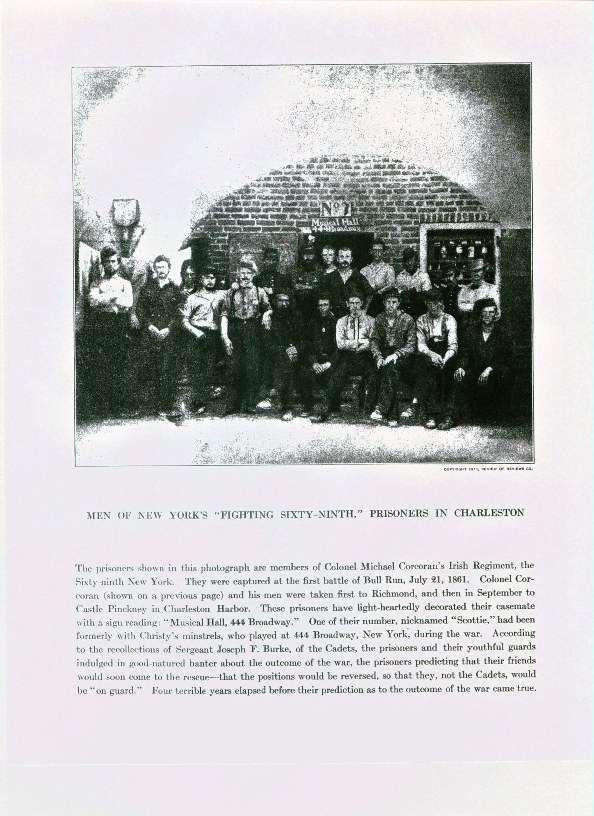
They returned to Washington on the 23rd, took position near Fort Ellsworth, and were assigned to Sedgwick's Brigade.
On the 27th and 28th of August, a portion of the regiment had a skirmish with the enemy at Bailey’s C ross Roads, but met with no loss.
On the 27th of Sept. the regiment moved to the Fowle's estate on in the old Fairfax Road, and there remained until March 17th, 1862, when they marched to Yorktown, and bore an honorable part in the siege of that place, and were among the first to follow in pursuit of the enemy after their evacuation.

They also took a prominent part in the battle of Williamsburg on the 5th of May; and at the battle of Seven Pines on the 31st, made a successful charge on the enemy's lines, losing nearly one-third of their number present in the engagement.
They also participated in the battle of White Oak Swamp on the 25th of June, and at Charles City Crossroads on the 30th.
They were present at the battle of Malvern Hill, where they were exposed to a severe fire from the enemy's batteries, and afterwards retreated to Harrison's Landing.
On the 29th of August, they arrived at Bull Run, and took a prominent part in the engagement on that day and the next, and fell back with the rest of the forces to Centerville.
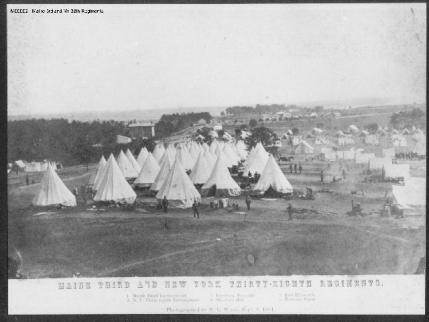 On the next day, while on the march to Fairfax, the regiment was engaged in the battle of Chantilly, losing 4 men killed, 38 wounded, and 8 missing.
On the next day, while on the march to Fairfax, the regiment was engaged in the battle of Chantilly, losing 4 men killed, 38 wounded, and 8 missing.
They continued their retreat towards Alexandria, arriving at that place on the second of June, and remaining near Fort Bernard until the 15th, when they crossed to Maryland and guarded the several fords of the upper Potomac. While thus engaged, they had a brisk engagement with Stuart's cavalry at the mouth of the Monocacy.
They arrived at Falmouth, Virginia, on the 22nd of November.
They participated in the battle of Fredericksburg on the 13th of December, their loss being 3 killed, 25 wounded, and 4 missing.
After the battle they recrossed the Rappahannock River, and encamped near Falmouth, where they remained until the 4th of March, 1863.
On the 28th of April, the regiment crossed the Rappahannock, and participated in the engagements of the Wilderness and Chancellorsville on May 2d and 3d; in these engagements they lost in killed, wounded and missing, 61 officers and men.
On the 11th of June and they joined in the campaign which resulted in the battle of Gettysburg, at which place they engaged the enemy on the morning of July 2d, a long distance in advance of the line, losing 48 men killed, wounded and missing; during of the remainder of the day the regiment held an advanced position in the Peach Orchard, where, being attacked by an overwhelming forced of the enemy, they lost in killed, wounded and prisoners, 66 officers and men.
See this site for the Report of Col. Hiram Berdan, First U.S. Sharpshooters, on the operations of the Third Maine at Gettysburg
They afterwards participated in the pursuit of the retreating enemy and engaged and routed them at Wapping Heights.
On the 31st of July in the regiment arrived at Sulfur Springs and there remained encamped until the 16th of September, at which date they proceeded to Culpepper, and remained there until October 11th.
They engaged the enemy on the 12th at Auburn mills, and encamped at Catlett's Station on the 22nd.
The regiment was engaged in the skirmishes at Kelly's Ford on the 7th of November, and took part in the engagements at Orange Grove on the 27th, and at Mine Run on the 30th, their loss in the several actions being 1 killed, 8 wounded, and 23 missing.
They afterwards recrossed the Rapidan and encamped near Brandy Station, where they remained until the 4th of May, 1864, when they moved across the Rapidan towards Richmond, participating the next day in the battle of the Wilderness, losing heavily.
They made a successful charge on the enemy’s lines at Spottsylvania on the 12th, and on the 23rd, participated in the assault on the enemy’s work covering the bridge at the crossing of the North Anna.
On the third of June the regiment supported General Barlowe's division in the engagement at Cold Harbor; and on the 4th, their term of three years’ service having expired, they left for Maine, arriving on the 11th at Augusta, where the regiment was mustered out and discharged the U. S. service, June 28th by Capt. Thomas C. J. Baily, 17th U. S. Infantry.
Sixty-four re-enlisted men and the recruits whose term of service had not expired, were transferred to the 17th Me. Vols. before the departure of the regiment from the field.
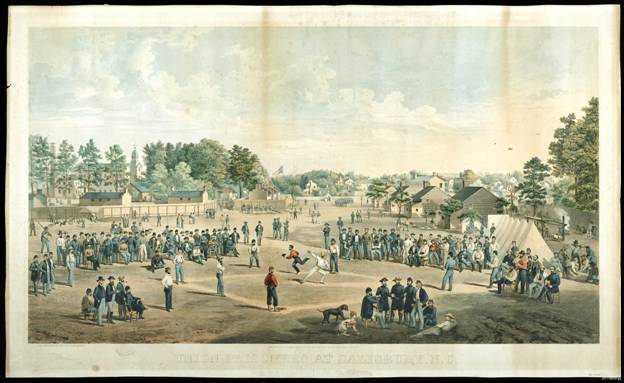
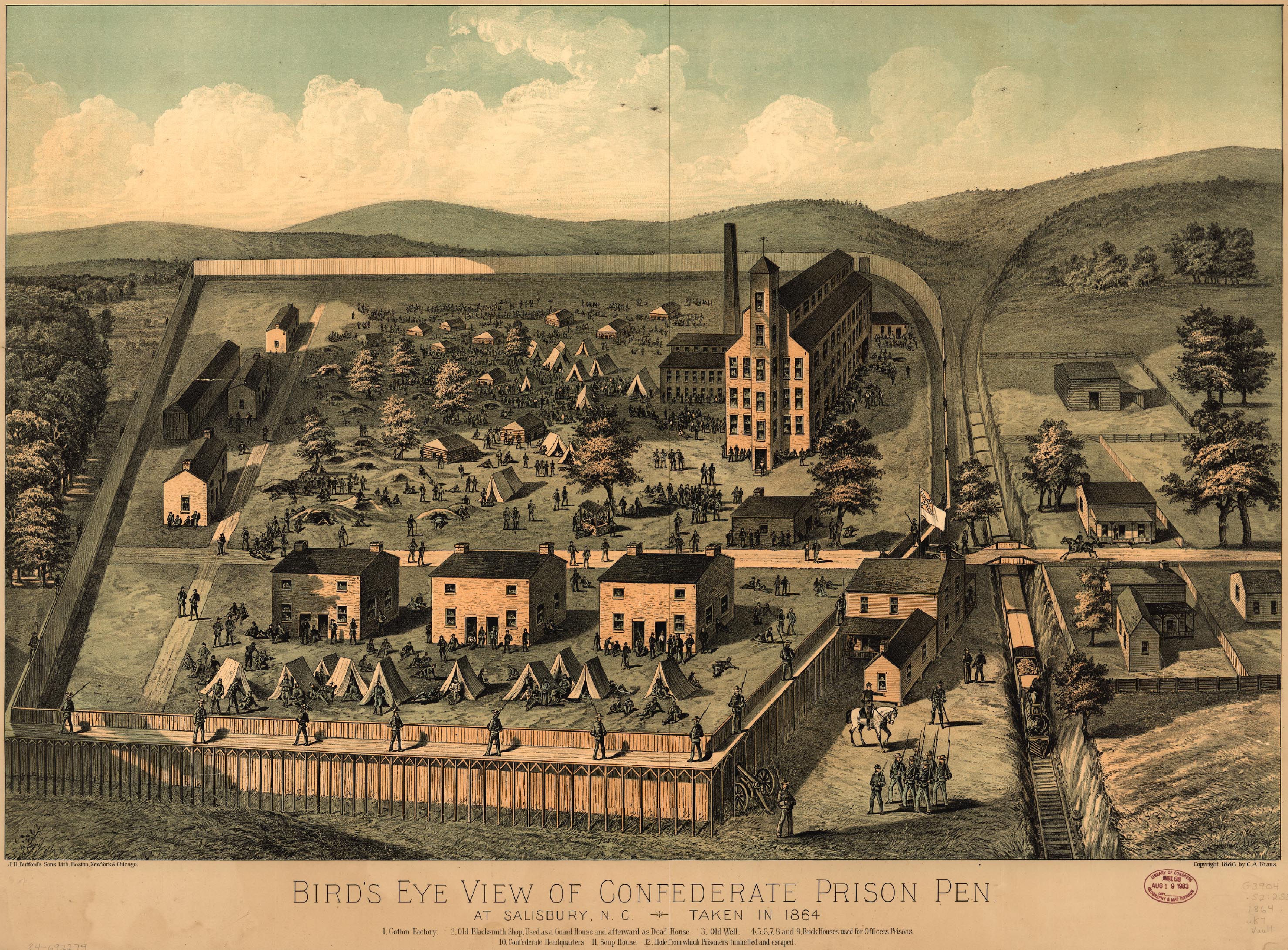 Salisbury Prison
Salisbury Prison
This is the prison that Anson spent four months in after being captured in the first battle of Bull Run. You can see Anson Reed Morrison's name in the list of prisoners exchanged at this website.
Anson Service and Civil War Record
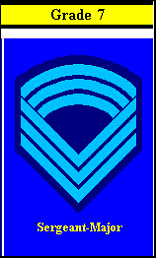 Anson Reed Morrison of Skowhegan, Maine, enlisted on April 24 10 days after the war began. He was mustered on June 4th, 1861 for three years. He was assigned to the Third Maine Regiment Infantry. This regiment fought bravely throughout the war including the First Battle of Bull Run, and Gettysburg. They left the battle field three years later on June 4, 1864, to return home to Maine. They had just fought intense battles in the second Wilderness Battle, Spotsylvania, and was about to be sent into the battle at Cold Harbor when they were taken out of line and sent home. That morning 7000 Union casualties were incurred in one bloody slaughter of men marching directly into all types of firepower. This was recorded as one of the worst Union defeats of the war, and one that Grant would regret for the rest of his life.
Anson Reed Morrison of Skowhegan, Maine, enlisted on April 24 10 days after the war began. He was mustered on June 4th, 1861 for three years. He was assigned to the Third Maine Regiment Infantry. This regiment fought bravely throughout the war including the First Battle of Bull Run, and Gettysburg. They left the battle field three years later on June 4, 1864, to return home to Maine. They had just fought intense battles in the second Wilderness Battle, Spotsylvania, and was about to be sent into the battle at Cold Harbor when they were taken out of line and sent home. That morning 7000 Union casualties were incurred in one bloody slaughter of men marching directly into all types of firepower. This was recorded as one of the worst Union defeats of the war, and one that Grant would regret for the rest of his life. A summary of the regiment follows from a 3rd Maine Reenactment group source:
The Third Maine was recruited very early in the war and was present at the first major battle in the East, 1st Bull Run. Their 1st commanding officer was Oliver Otis Howard, later to rise to Major General, with a somewhat controversial history of his own ( a story for another time). At 1st Bull Run the 3rd was on the right flank of the Federal army when that flank was struck and caved in by newly arrived rebel reinforcements, leading to a rout of the entire Federal army. At that time none of the northern army and few of the southern had even practiced maneuvers at the brigade or division level!!!
The 3rd ME was engaged in most of the battles in the Peninsula campaign, especially Fair Oaks where they took substantial casualties. During this time and soon after at 2nd Bull Run they were in General Phil Kearney's division and were the proud wearers of the Kearney patch, a red diamond the General invented
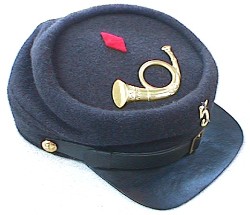 to distinguish his own command from other divisions. They spent the Antietam campaign in the defenses of Washington, and supported a battery at Fredericksburg, thus avoiding the catastrophic losses other units suffered in those battles.
to distinguish his own command from other divisions. They spent the Antietam campaign in the defenses of Washington, and supported a battery at Fredericksburg, thus avoiding the catastrophic losses other units suffered in those battles.They were in the thick of the fight at Chancellorsville, and participated in Sickles' night assault ( a Civil War rarity), where they were caught between the blue and gray lines in the dark and took fire from both sides.
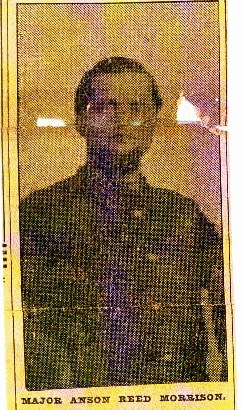 The Gettysburg campaign was the highlight of the 3rd's eventful service. On the morning of the second day they, with Berdan's sharpshooters, were sent on a reconnaisance into the woods on the confederate side of the field where they became engaged with an entire brigade, 5 times their number. The information thus obtained prompted General Sickles' infamous advance of his entire III Corps to an unauthorized position. In the process the 3rd ME was separated from their brigade, who were posted at Devil's Den, and they were hastily assigned to the Peach Orchard area. This point formed a salient, or right angle, which was promptly crushed and hurled back by Barksdale's and Kershaw's rebel brigades. The 3rd Maine sustained more than 50% casualties on this day, as did many of their III Corps fellow regiments. Every man in their color company was killed or wounded. The remnant of the regiment was present at Pickett's Charge the next day, but the attack was repulsed by the units in front of them before they were engaged.
The Gettysburg campaign was the highlight of the 3rd's eventful service. On the morning of the second day they, with Berdan's sharpshooters, were sent on a reconnaisance into the woods on the confederate side of the field where they became engaged with an entire brigade, 5 times their number. The information thus obtained prompted General Sickles' infamous advance of his entire III Corps to an unauthorized position. In the process the 3rd ME was separated from their brigade, who were posted at Devil's Den, and they were hastily assigned to the Peach Orchard area. This point formed a salient, or right angle, which was promptly crushed and hurled back by Barksdale's and Kershaw's rebel brigades. The 3rd Maine sustained more than 50% casualties on this day, as did many of their III Corps fellow regiments. Every man in their color company was killed or wounded. The remnant of the regiment was present at Pickett's Charge the next day, but the attack was repulsed by the units in front of them before they were engaged.In 1864 they participated in the battle of the Wilderness and were at the horrifying hand-to-hand engagement at the Bloody Angle at Spottsylvania. After the North Anna River battle, they were mustered out just in time to miss the bloodbath at Cold Harbor. Those who reenlisted were consolidated into the 17th Maine.
Anson Reed Morrison Civil War Record
The Civil War Record shows Anson as belonging to Company F and S of the 3rd Maine Regiment Infantry. He was mustered out on June 28, 1864, at the rank of Sergeant Major. The following descriptions of battles come from several sources including the war records.
Civil War Books Online for browsing
History of the Civil War, 1861–1865; James Ford Rhodes 1918More than 40 books online
These are books that can be viewed online.
Records at the Maine State Archives
Muster In: June 4, 1861
Muster Out: June 28, 1864
Length of Service: Three Years
Militia Units:
Company A - Bath City Grays
Engagements
First Bull Run, Virginia - July 21, 1861
Bailey's Cross Roads, Virginia - August 28, 1861
Yorktown, Virginia - April 5 - May 4, 1862 (Peninsular Campaign)
Williamsburg, Virginia - May 4, 1862 (Peninsular Campaign)
Seven Pines, Virginia - May 31, 1862 (Peninsular Campaign)
White Oak Swamp, Virginia - June 30, 1862 (Peninsular Campaign)
Malvern Hill, Virginia - July 1, 1862 (Peninsular Campaign)
Second Bull Run, Virginia - August 29-30, 1862
Chantilly, Virginia - September 1, 1862 (Second Bull Run Campaign)
Fredericksburg, Virginia - December 13, 1862
Chancellorsville, Virginia - May 1-4, 1863
Gettysburg, Pennsylvania - July 1-3, 1863
Wapping Heights, Virginia - July 21-23, 1863 (Bristoe Campaign)
Catlett's Station, Virginia - October 14, 1863 (Bristoe Campaign)
Kelly's Ford, Virginia - November 7, 1863 (Bristoe Campaign)
Orange Grove, Virginia - November 26, 1863 (Bristoe Campaign)
Mine run, Virginia - November 30, 1863
Wilderness, Virginia - May 5-7, 1864
Spottsylvania, Virginia - May 7-20, 1864
North Anna, Virginia - May 23-27, 1864
Totopotomy, Virginia - May 26-30, 1864
Cold Harbor, Virginia - May 31-June 12, 1864
Casualties:
1,586 Enrollment
134 Killed of Died of Wounds
140 Died of Disease
33 in Confederate Prisons
Civil War Records Common To All Regiments
Civil War Correspondence
Civil War Index for Soldiers and Sailors
Civil War Muster Rolls
Civil War Obituaries
Civil War Photos (Mostly Officers)
Cemetery Index
General Law Pension
Graves Registration Cards
Civil War Records Unique to the Third Maine Regiment
Bounty Receipts, Companies A, B, C, D - Box 150
Enlistment Papers, 1861 - Box 150
Recruits, 1862, 1863, 1864 - Box 150
Clothing List, August 6, 1862 - Box 151
Consolidated Month Report, duplicate, 1862 - Box 151
George H. Thompson, Ohio, discharge paper - Box 151
Muster In and Descriptive List, 1861 - Box 151
Re-enlistments, 1864 - Box 151
Return of the 3rd Reg't Inf., 1861 - Box 151
Company Book, 1863-1864
Hospital Returns, September 1863
Medical Examinations, Co. A, D, 1861
Post War Post Office Addresses
Quarter Master's Journal, 1863
Regimental Returns, 2nd and 3rd ME., 1861
Regimental Returns, 2nd, 3rd, 4th and 5th ME, 1862
Regimental Returns, 3rd, 4th and 5th ME., 1863
Samuel B. Wing - Memoirs of Life and War (in Obits Box 11)
Newspaper clippings re: 3rd Maine reunions 1929-1940 (in Obits Box 12)
Manuacript biography of Benjamin H. Hall (2 pages) by Henry C. Hall in 1896 from Woburn, Mass.
Letters regarding a diary of William H. Sturtevant of Beaver City, Neb.
Letter from William Livermore regarding the loss of the 3rd Maine's Colors (1 page) in 1895
Copy of an 1895 Daily Kennebec Journal article "Four Augusta Boys" in the 3rd Maine
The following images are from the historic site of Manassus, Virginia. The Battle of Bull Run was the first battle of the Civil War.


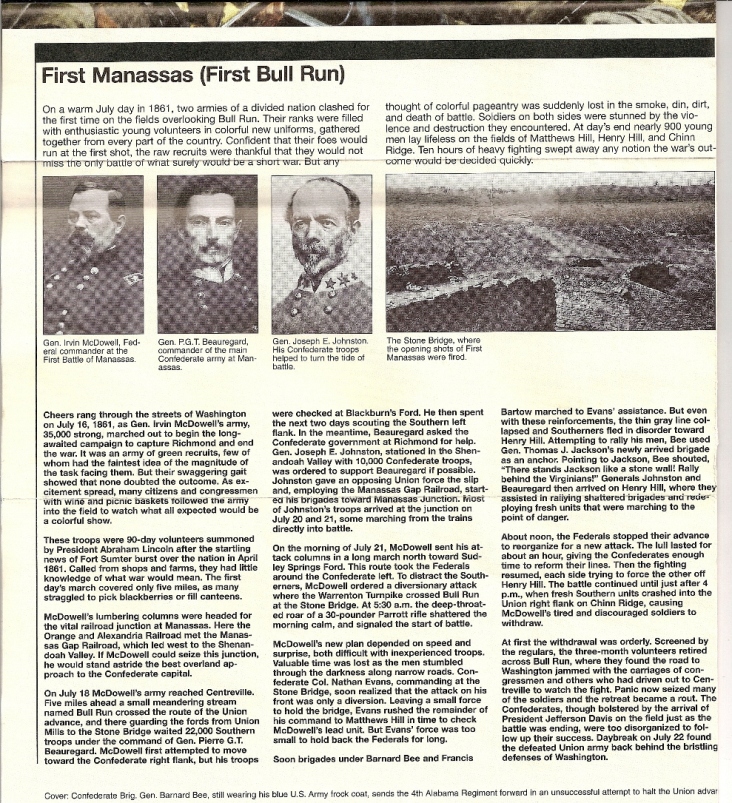
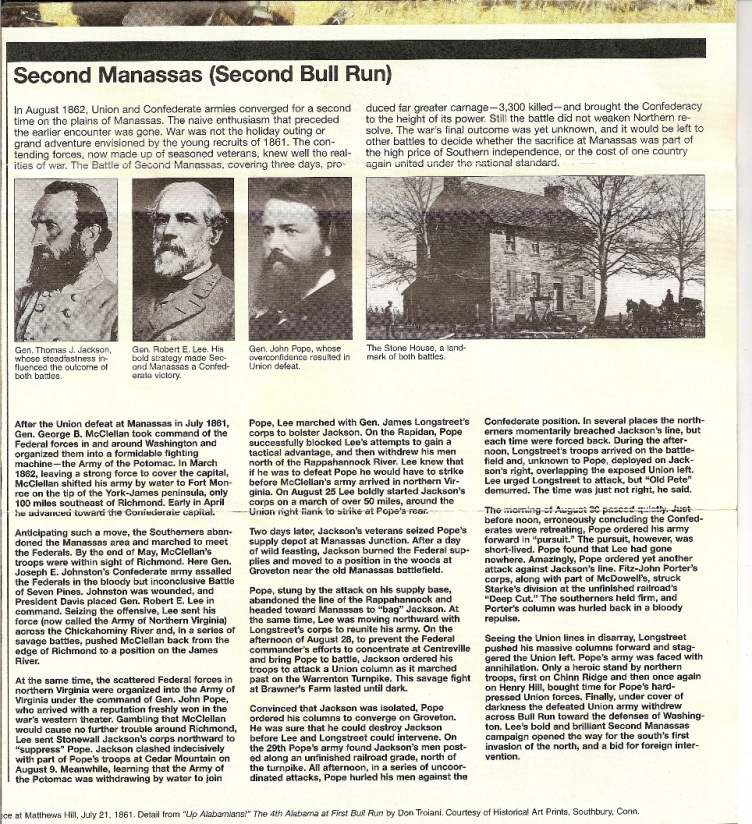
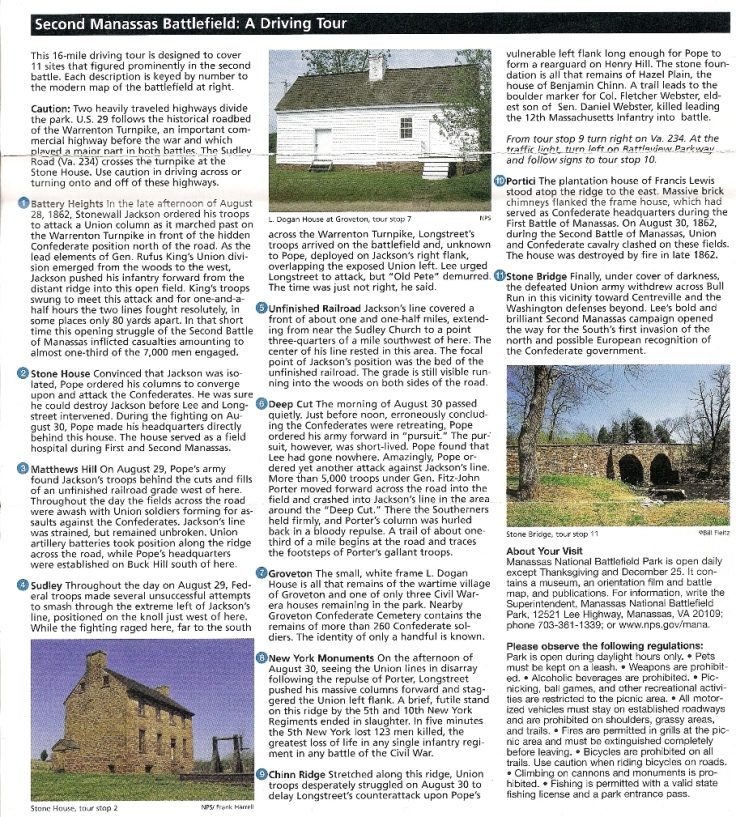
Peter Mirgain - Missouri Light Artillery
Peter Mirgain is the great grandfather of Veronica Semon, Jim Morrison's wife. He volunteered out of St.Louis into the Union's army in 1861 for three years.
A very thorough and interesting lecture by DR. LUEBBERING on Missouri's Germans and the Civil War can be viewed on the following link.
Dr. Luebbering Lecture
From Wikipedia:
On May 10, 1861, the Third Missouri under Colonel Blair and Lieutenant Colonel Franz Hassendeubel[5] participated in the arrest of the Missouri Volunteer Militia drilling at Camp Jackson at Lindell Grove on the western border of St. Louis City. As the Missouri militiamen were being march under guard back to the Arsenal near the riverfront, angry crowds confronted the Federal forces and the confused situation soon devolved into rioting and gunfire. Over 27 people were killed and the Camp Jackson Affair helped to polarize the state and send Missouri down the road to its own internal civil war.
After June 12, 1861, the Third Missouri was part of a complex movement against the Missouri State Guard. One force, under Brigadier General Lyon moved up the Missouri River by steamer, to capture the State capital at Jefferson City. A second brigade, composed of the 3rd and 5th Missouri and two batteries of artillery moved into southwest Missouri under the overall command of Colonel Sigel, to cut off any Missouri State Guard troops which might move south before Lyon's advance.
Colonel Sigel took his force to Rolla, thence to Springfield, Missouri, arriving on June 25. They marched to Neosho (June 26–30) and were forced to retreat to Mt. Vernon in the face of a large force of State Guardsmen. Two companies of the Third Missouri who formed Sigel's rear guard were captured covering the retreat.
On July 5, Sigel's force of 1,100 met 4,000 State Guardsmen (and 2,000 unarmed Guard recruits) at the Battle of Carthage. Confronted with the large force of Guardsmen Sigel retreated in good order into Carthage and successfully disengaged and retreated back to Sarcoxie that night.
The Third joined with General Lyon's force at Springfield, and participated in the August 10 Battle of Wilson's Creek. The Third was again part of a brigade (with the Fifth Missouri) under Colonel Sigel. Sigel's 2nd Brigade initially had significant success, attacking Confederate cavalry on the southeast corner of the southern camps (at the Sharp Farm). After driving off these southern troops, Sigel halted his brigade across the Wire Road, above Skeeg's Branch (Creek).
However, Sigel positioned his artillery badly (behind the military crest of the ridge) and cautioned his men against accidentally firing on Federal troops he expected to be advancing south down the Wire Road (the 1st Iowa Infantry was uniformed in grey). At this point, Confederate Brigadier Ben McCulloch lead an attack south down the Wire Road, with the respected Third Louisiana Infantry in fore. Skirmishers, officers, and Sigel himself mistook the Louisiana troops for the Iowa infantry allowing them to advance to point blank range before delivering a devastating volley into the confused Federal troops. Sigel shouted "they make a mistake" as his brigade was overrun.
The majority of the shattered Third Missouri escaped, and eventually rejoined the Federal force retreating to Springfield, and then back to Rolla. From there the regiment was ordered back to St. Louis to be demobilized.
The all companies of the regiment were mustered out by September 4, 1861. Elements of the 3rd Missouri Volunteers (3 Months Service) were incorporated in the new 3rd Missouri Volunteer Infantry (3 Years Service) under Colonel Isaac F. Shephard.
Peter Mirgain's service record:
April 22, 1861 Enlisted for three years. Backof's Battalion Artillery Battery A, 1st Brigade
Missouri volunteers. Private.
June 3, 1861 St Louis Arsenal
July 5, 1861 Carthage
August 2, 1861 Dug Springs
August 10, 1861 Wilson Creek
Sept 20, 1861 Corporal in Welfrey's Battery. Light Artillery. 2nd Brigade
Jan 27, 1862 Lebanon MO. Promoted to Sergeant.
Nov, 1862 Battery B, 1st Regiment. Artillery
April 10, 1863 Siege of Vicksburg
Feb, 1864 Stoppage (pay?) of $20 (or $90?) for loss of one Beals Revolver
Sept, 1864 Mustered Out
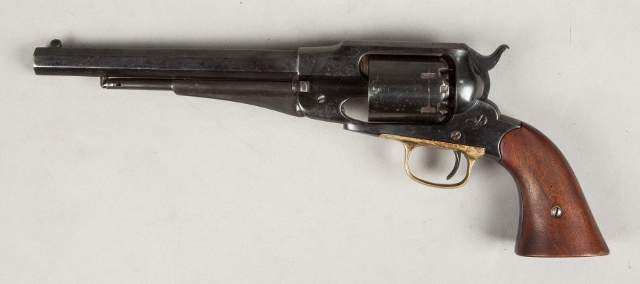
Remington New Model Army Revolver, early model with mortised frontsight
The Remington is a single-action, six-shot, percussion revolver produced by E. Remington & Sons, Ilion, N.Y., based on the Fordyce Beals patent of September 14, 1858 (Patent 21,478).[2] The Remington Army revolver is large-framed revolver in .44 caliber with an 8-inch barrel length. The Remington Navy revolver is slightly smaller framed than the Army and in .36 caliber with a 7.375 inch [Beals Navy 7.5 inch] barrel length. There were three progressive models made: the Remington-Beals Army & Navy (1860–1862), the 1861 Army & Navy (1862–1863), and the New Model Army & Navy (1863–1875).[3] The three models are nearly identical in size and appearance. Subtle but noticeable differences in hammers, loading levers, and cylinders help identify each model. The 1861 Remington actually transitioned into New Model appearance by late 1862, slowly transforming throughout 1862, due to continual improvement suggestions from the U. S. Ordnance Department.[3][4]
Remington percussion revolvers are very accurate and capable of considerable power with muzzle velocities in the range of 550 to 1286+ feet-per-second, depending upon the charge loaded by the shooter. Combustible cartridge velocities averaged from 700 to 900 feet per second (270 m/s), depending on powder quality, charge and conical bullet weight. Combustibles were usually loaded with a special high performance sporting grade black powder, using the minimum charge required for a specified impact level, usually determined by pine penetration tests. The special powder and minimal charge reduced black powder fouling, allowing revolvers to be fired as much as possible before cleaning was necessary.
World War II
| Stan Morrison US Army | Keith Morrison US Army | Larry Morrison US Air Force |
|---|---|---|
| Robert Morrison US Marines | Charles LaBarge US Navy |
Several Morrison brothers and cousins of St. Louis served in World War II. Following is an account of each one.
Stanley Morrison 1912-1970 US Army - 69th Signal Battalion
Stan was a Staff Sergeant assigned to the 69th Signal Battalion.
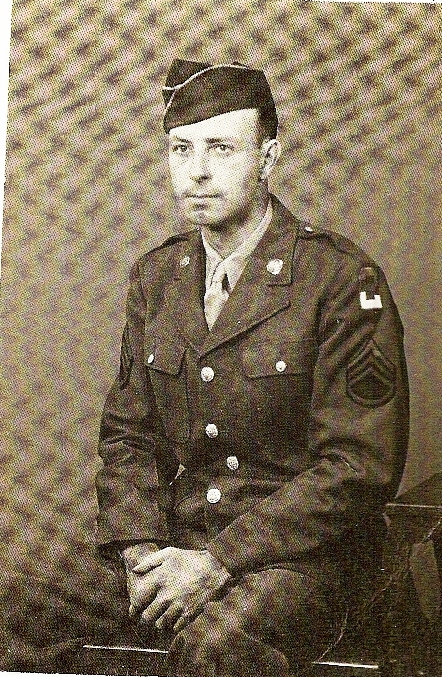
Stan received the Bronze Star Medal and the Purple Heart for heroic service in connection with military operations against the enemy in France on 15 Febraury 1945. While repairing a vital communications line near KEMPLICN (?), Sergeant Morrison and two companions were attacked by enemy aircraft. Disregarding his personal danger, Sergeant Morrison remained in a tree from which he was untangling the severed wire and ordered the other men to take cover. Realizing the importance of restoring communications, he remained in the hazardous position until the mission was completed. Sergeant Morrison's high courage under fire and his unswerving attention to duty inspired his men and brought great credit upon himself and the Army.
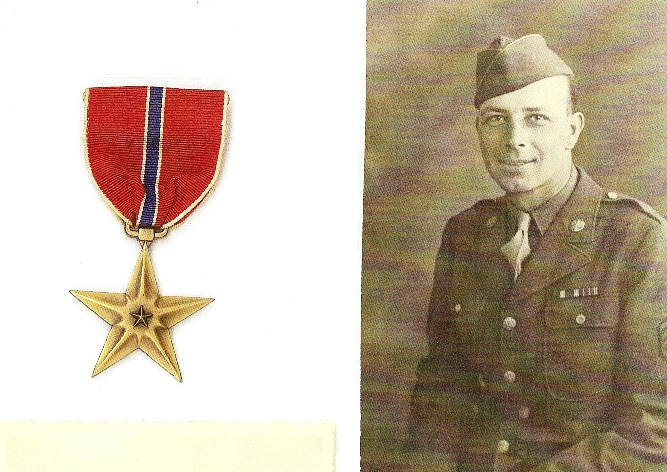
Stan entered the Army from Missouri.
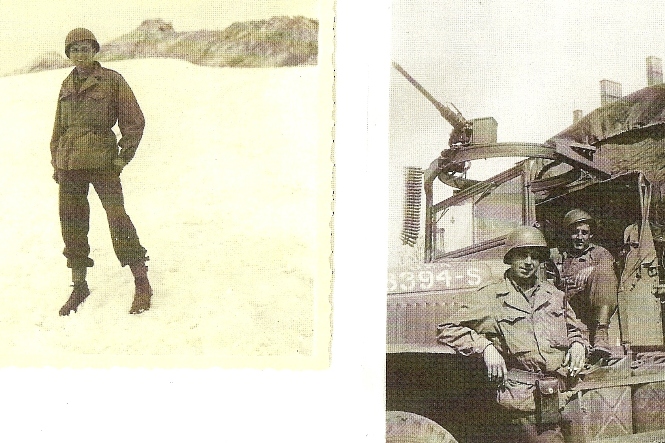
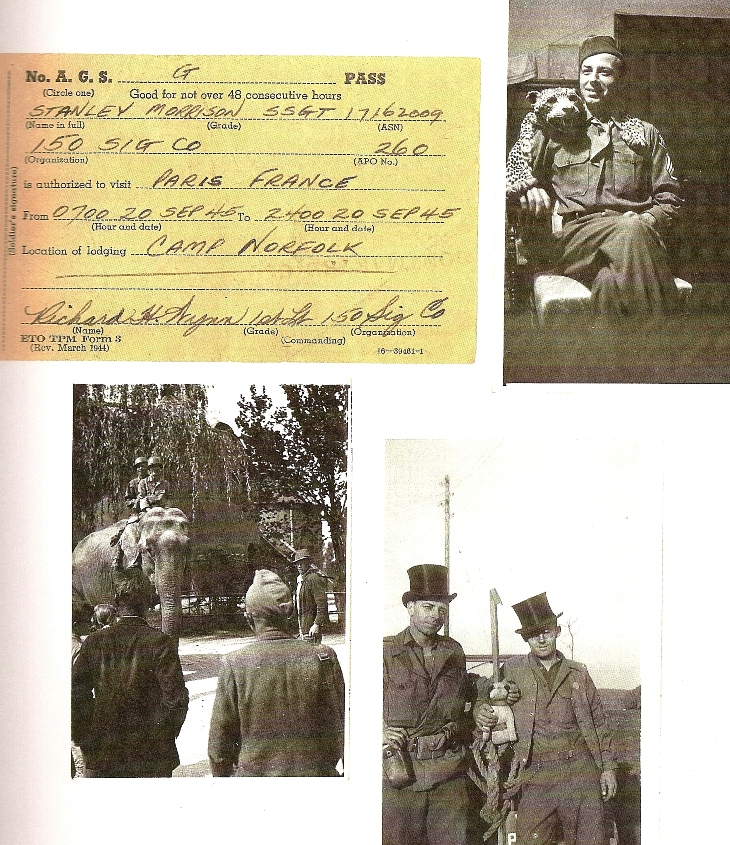
Keith Morrison 1917-2002 Counter Intelligence
History of the Counter Intelligence Corps
Keith Morrison served his country stateside during World War II. At the end of the war, he was stationed in Montgomery, Alabama as an officer in civilian clothes of the Counter Intelligence Corps (CIC). The following describes his activity during the period 1942-1945.
Keith enlisted in the Army on November 6, 1942 at Jefferson Barracks. His branch code was "Branch Immaterial - Warrant Officers, USA". He was to be enlisted for the duration of the war plus six months. His army record says he was 71 inches high and weighed 158 pounds. His civil occupation was "Photographer, Aerial or Accountant or Auditor.
Keith went to FBI School in Washington, DC at the end of 1942. He asked Dorothy Labarge to marry him here, and she said yes.
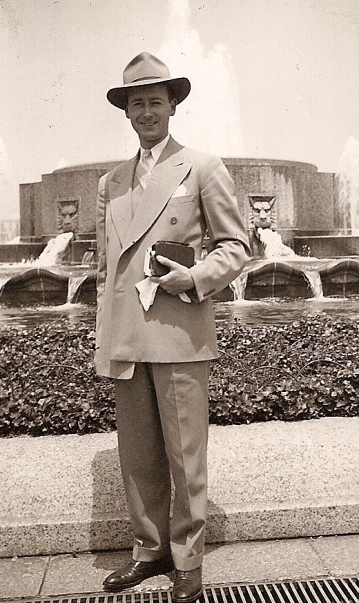
Marriage to Dorothy in St. Louis March 17, 1943.
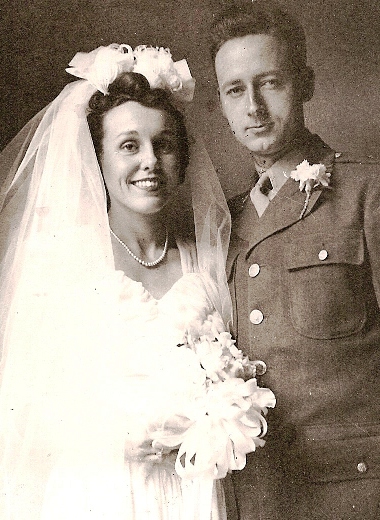
Keith was stationed in Kansas City in the fall of 1943 for Counter Intelligence Training.

During that time, there were army orders forcing Keith and Dot to travel to Omaha during a blizzard. No one knows what secrets may have been uncovered there. Keith never told.
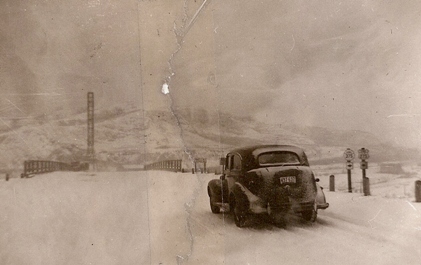
They spent Christmas in Columbus Ohio in 1943, and stayed until their first son, Thomas, was born on May 1, 1944. Soon after that, Dorothy moved back to St. Louis, and Keith was off for Officer's Training in Texas with the CIC. He stayed at Fort Sam Houston for 5 1/2 months from September of 1944 through February of 1945.

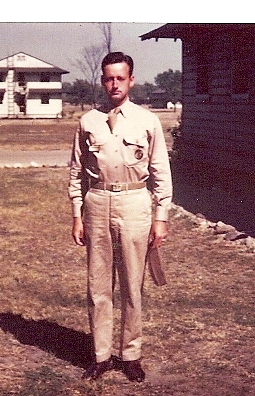
Keith is here looking "hollywood" serious with his boss from the CIC, Captain Brown (most likely an alias).
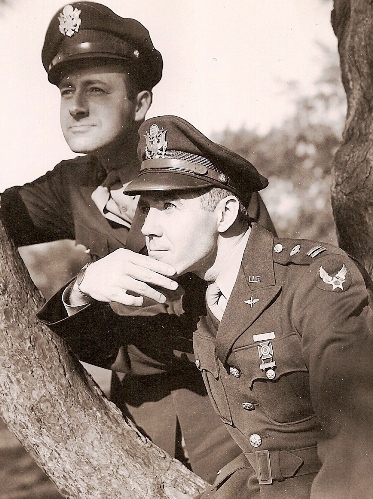
Keith was then assigned to Montgomery, Alabama where he attended more training at Auburn Polytechnic Laboratory. He was an officer in civilian clothes. The tie he is wearing was determined later to be a complex coded message that gave Eisenhower the secret plans for D-Day.

Keith and Dorothy had dinner at Van Horn's Restaurant, which was a favorite in Brentwood. See the link below for pictures of this restaurant.

Van Horn's Restaurant - circa 1940
Soon after Pearl Harbor, the CIP was given the more appropriate designation of the Counter Intelligence Corps (CIC). At first, CIC personnel functioned as plain-clothes investigators on the home front, working under the direction of the G-2's of the various Army service commands. However, the CIC was soon given an additional role overseas, where its members operated in uniform in support of tactical formations. By the end of 1943, some 5,000 members of CIC were serving at home and abroad. Unfortunately, the CIC was not popular in all quarters. A number of ranking Army officers questioned the validity of a counterintelligence function within the military, and the ClC's activities seem to have displeased certain influential government leaders. As a result, the CIC was broken up. CIC agents continued to serve with troop units, but most CIC personnel in CONUS were merged with the criminal investigators of the Provost Marshal General's Office to form a new consolidated Security Intelligence Corps. The CIC training facility was shut down, and the position of Chief, CIC was abolished. Despite this setback, the CIC was able to compile a significant record during World War II. CIC agents guarded the security of the Manhattan Project and parachuted into Normandy on D-Day with the first waves of airborne troops. Even before World War II had come to a close, it had become clear that the Army's decision to do away with the CIC in CONUS had been a mistake. CIC personnel overseas no longer had a rotation base, and there was no way to train the large numbers of counterintelligence personnel that would inevitably be needed for occupation duty. Therefore, the Office of the Chief, CIC and the CIC School were reestablished as part of the Army Service Forces, and the short-lived Security Intelligence Corps was phased out.
The CIC operated independently of the OSS (Office of Strategic Services), the forerunner of the CIA. In fact, it is believed that the CIC has as much light to shed on the Cold War intelligence efforts as any organization.
Lawrence Morrison 1920 - Second Emergency Rescue Squadron: US Army Air Forces
Larry was a Staff Sergeant assigned to the Far East Air Forces. He flew 26 combat missions totalling 273 hours. The flights consisted of patrols, searches and rescues in the vicinity of Ceram, Celebres, Halmaheras, Borneo, Palau, Southern Philippines, Luzon and Indo China.
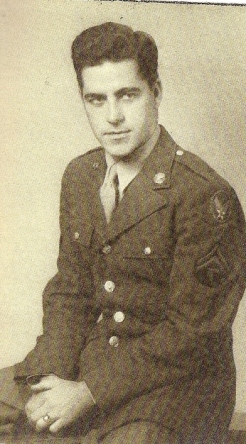

He received the Bronze Oak-Leaf Cluster for meritorious achievement while participating in sustained operational flight missions in the Southwest Pacific Area from 28 May 1945 to 18 July 1945, during which hostile contact was probable and expected. These operations consisted of patrol and search missions and often involved landing in heavy sease within range of enemy fire to effect rescues of air crew members forced down by hostile action or operational failure. The courage and devotion to duty displayed by Sergeant Morrison during these flights reflect great credit on the United States Army Air Forces.
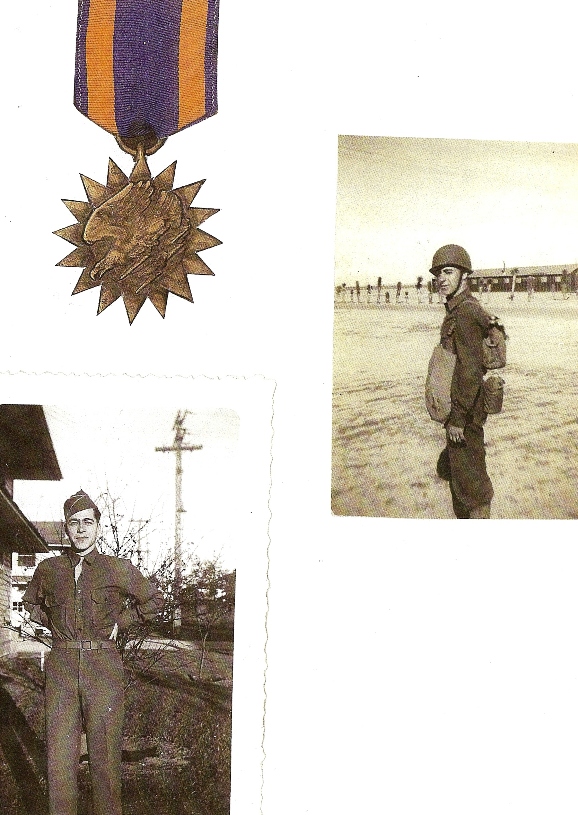
Larry was drafted in August of 1942 and inducted at Jefferson Barracks, Missouri. He did his basic training with the Medical Corp at Camp Grant, Rockford, Illinois. In October 1942 he was assigned to Muroc Airbase in California (now known as Edwards Air Force Base). In December he attended the School of Aviation Medicine at Randolf Air Base in San Antonio, Texas, training to be a flight surgeon's assistant. In February, 1943, he returned to Muroc in that capacity. In February 1944 he transferred to the 2nd Emergency Rescue Squad and trained at Air Force bases in San Francisco, Gulfport MS, and Biloxi MS. Finally with training done, he traveled via a converted freighter from San Francisco to Ora Bay, New Guinea.
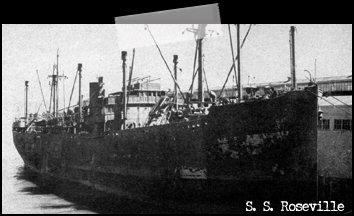
Looks like they stopped by an island to pick up King Kong along the way!
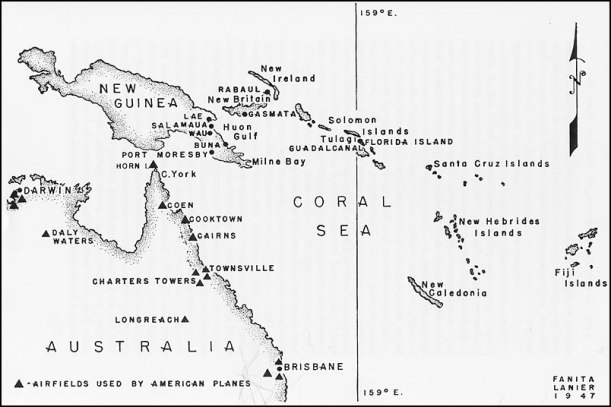
From there, he moved to several islands as the war moved north towards Japan. He was at Clark Field in Manila, Phillipines in December, 1945. He came home to Jefferson Barracks in late December, 1945 where he was discharged.
Larry's unit was the 2nd Emergency Air-Sea Rescue Squadron and was attached to the 13th Air Corp.
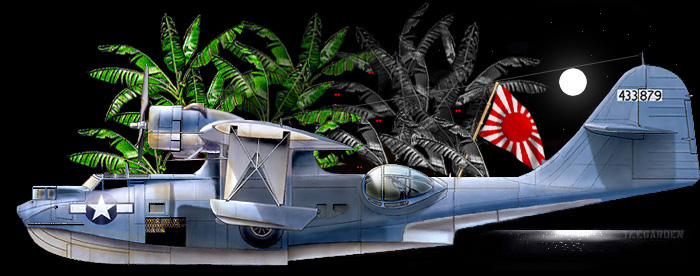
Second Emergency Air Rescue Squadron Website
PBY amphibious aircraft were used for search and rescue. Most missions were to fly to location of the air strikes and orbit out of anti aircraft range until the bomber and fighter aircraft completed their mission. If no planes were shot down, the PBY returned to base. A crew consisted of a Pilot, Co-pilot, Navigator, Engineer, and a Surgical Technician to take care of an injured survivor. No Doctors were on board.
Per Larry himself, "I would never jump out of an airplane, then or now!".
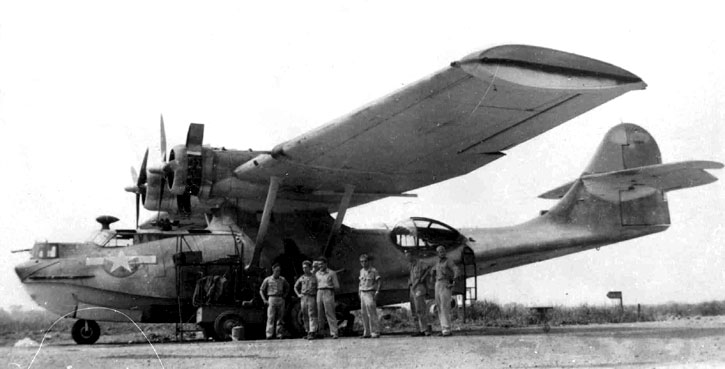
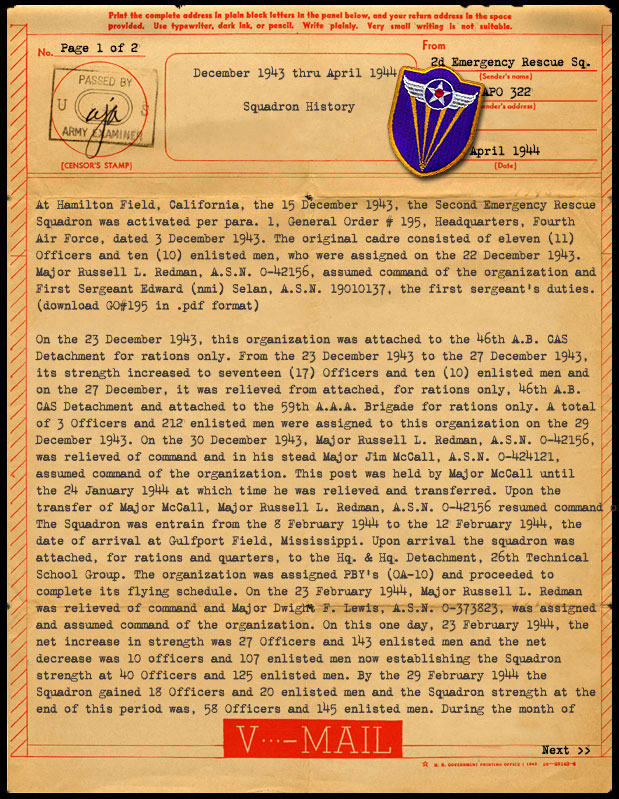
Timeline Pacific War during Larry Morrison's tour of duty:
April 17, 1944 - Japanese begin their last offensive in China, attacking U.S. air bases in eastern China.
April 22, 1944 - Allies invade Aitape and Hollandia in New Guinea.
May 27, 1944 - Allies invade Biak Island, New Guinea.
June 5, 1944 - The first mission by B-29 Superfortress bombers occurs as 77 planes bomb Japanese railway facilities at Bangkok, Thailand.
June 15, 1944 - U.S. Marines invade Saipan in the Mariana Islands.
June 15/16 - The first bombing raid on Japan since the Doolittle raid of April 1942, as 47 B-29s based in Bengel, India, target the steel works at Yawata.
June 19, 1944 - The "Marianas Turkey Shoot" occurs as U.S. Carrier-based fighters shoot down 220 Japanese planes, while only 20 American planes are lost.
July 8, 1944 - Japanese withdraw from Imphal.
July 19, 1944 - U.S. Marines invade Guam in the Marianas.
July 24, 1944 - U.S. Marines invade Tinian.
July 27, 1944 - American troops complete the liberation of Guam.
August 3, 1944 - U.S. And Chinese troops take Myitkyina after a two month siege.
August 8, 1944 - American troops complete the capture of the Mariana Islands.
September 15, 1944 - U.S. Troops invade Morotai and the Paulaus.
October 11, 1944 - U.S. Air raids against Okinawa.
October 18, 1944 - Fourteen B-29s based on the Marianas attack the Japanese base at Truk.
October 20, 1944 - U.S. Sixth Army invades Leyte in the Philippines.
October 23-26 - Battle of Leyte Gulf results in a decisive U.S. Naval victory.
October 25, 1944 - The first suicide air (Kamikaze) attacks occur against U.S. warships in Leyte Gulf. By the end of the war, Japan will have sent an estimated 2,257 aircraft. "The only weapon I feared in the war," Adm. Halsey will say later.
November 11, 1944 - Iwo Jima bombarded by the U.S. Navy.
November 24, 1944 - Twenty four B-29s bomb the Nakajima aircraft factory near Tokyo.
December 15, 1944 - U.S. Troops invade Mindoro in the Philippines.
December 17, 1944 - The U.S. Army Air Force begins preparations for dropping the Atomic Bomb by establishing the 509th Composite Group to operate the B-29s that will deliver the bomb.
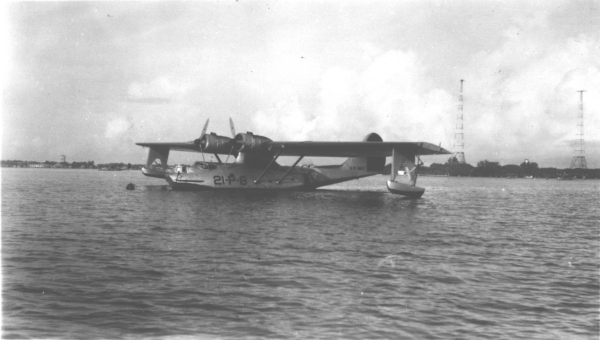
January 3, 1945 - Gen. MacArthur is placed in command of all U.S. ground forces and Adm. Nimitz in command of all naval forces in preparation for planned assaults against Iwo Jima, Okinawa and Japan itself.
January 4, 1945 - British occupy Akyab in Burma.
January 9, 1945 - U.S. Sixth Army invades Lingayen Gulf on Luzon in the Philippines.
January 11, 1945 - Air raid against Japanese bases in Indochina by U.S. Carrier-based planes.
January 28, 1945 - The Burma road is reopened.
February 3, 1945 - U.S. Sixth Army attacks Japanese in Manila.
February 16, 1945 - U.S. Troops recapture Bataan in the Philippines.
February 19, 1945 - U.S. Marines invade Iwo Jima.
March 1, 1945 - A U.S. submarine sinks a Japanese merchant ship loaded with supplies for Allied POWs, resulting in a court martial for the captain of the submarine, since the ship had been granted safe passage by the U.S. Government.
March 2, 1945 - U.S. airborne troops recapture Corregidor in the Philippines.
March 3, 1945 - U.S. And Filipino troops take Manila.
March 9/10 - Fifteen square miles of Tokyo erupts in flames after it is fire bombed by 279 B-29s.
March 10, 1945 - U.S. Eighth Army invades Zamboanga Peninsula on Mindanao in the Philippines.
March 20, 1945 - British troops liberate Mandalay, Burma.
March 27, 1945 - B-29s lay mines in Japan's Shimonoseki Strait to interrupt shipping.
April 1, 1945 - The final amphibious landing of the war occurs as the U.S. Tenth Army invades Okinawa.
April 7, 1945 - B-29s fly their first fighter-escorted mission against Japan with P-51 Mustangs based on Iwo Jima; U.S. Carrier-based fighters sink the super battleship YAMATO and several escort vessels which planned to attack U.S. Forces at Okinawa.
April 12, 1945 - President Roosevelt dies, succeeded by Harry S. Truman.
May 8, 1945 - Victory in Europe Day.
May 20, 1945 - Japanese begin withdrawal from China.
May 25, 1945 - U.S. Joint Chiefs of Staff approve Operation Olympic, the invasion of Japan, scheduled for November 1.
June 9, 1945 - Japanese Premier Suzuki announces Japan will fight to the very end rather than accept unconditional surrender.
June 18, 1945 - Japanese resistance ends on Mindanao in the Philippines.
June 22, 1945 - Japanese resistance ends on Okinawa as the U.S. Tenth Army completes its capture.
June 28, 1945 - MacArthur's headquarters announces the end of all Japanese resistance in the Philippines.
July 5, 1945 - Liberation of Philippines declared.
July 10, 1945 - 1,000 bomber raids against Japan begin.
July 14, 1945 - The first U.S. Naval bombardment of Japanese home islands.
July 16, 1945 - First Atomic Bomb is successfully tested in the U.S.
July 26, 1945 - Components of the Atomic Bomb "Little Boy" are unloaded at Tinian Island in the South Pacific.
July 29, 1945 - A Japanese submarine sinks the Cruiser INDIANAPOLIS resulting in the loss of 881 crewmen. The ship sinks before a radio message can be sent out leaving survivors adrift for two days.
August 6, 1945 - First Atomic Bomb dropped on Hiroshima from a B-29 flown by Col. Paul Tibbets.
August 8, 1945 - U.S.S.R. declares war on Japan then invades Manchuria.
August 9, 1945 - Second Atomic Bomb is dropped on Nagasaki from a B-29 flown by Maj. Charles Sweeney -- Emperor Hirohito and Japanese Prime Minister Suzuki then decide to seek an immediate peace with the Allies.
August 14, 1945 - Japanese accept unconditional surrender; Gen. MacArthur is appointed to head the occupation forces in Japan.
August 16, 1945 - Gen. Wainwright, a POW since May 6, 1942, is released from a POW camp in Manchuria.
August 27, 1945 - B-29s drop supplies to Allied POWs in China.
August 29, 1945 - The Soviets shoot down a B-29 dropping supplies to POWs in Korea; U.S. Troops land near Tokyo to begin the occupation of Japan.
August 30, 1945 - The British reoccupy Hong Kong.
September 2, 1945 - Formal Japanese surrender ceremony on board the MISSOURI in Tokyo Bay as 1,000 carrier-based planes fly overhead; President Truman declares VJ Day.
September 3, 1945 - The Japanese commander in the Philippines, Gen. Yamashita, surrenders to Gen. Wainwright at Baguio.
September 4, 1945 - Japanese troops on Wake Island surrender.
September 5, 1945 - British land in Singapore.
September 8, 1945 - MacArthur enters Tokyo.
September 9, 1945 - Japanese in Korea surrender.
September 13, 1945 - Japanese in Burma surrender.
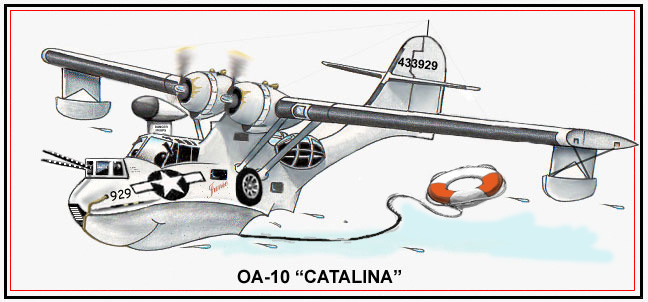
Robert Morrison US Marines served in Vietnam
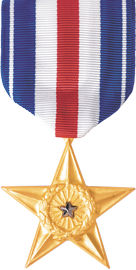
AWARDED FOR ACTIONS
DURING Vietnam War
Service: Marine Corps
Rank: First Lieutenant
Battalion: 2d Battalion
Division: 3d Marine Division (Rein.), FMF
GENERAL ORDERS:
CITATION:
The President of the United States of America takes pleasure in presenting the Silver Star to First Lieutenant Robert Scheck Morrison (MCSN: 0-87345), United States Marine Corps, for conspicuous gallantry and intrepidity in action while serving as a Platoon Commander with Company H, Second Battalion, Fourth Marines, THIRD Marine Division (Rein.), FMF, in connection with combat operations against the enemy during Operation STARLITE near Chu Lai, Republic of Vietnam. On 18 August 1965, while engaged in an attack against tenacious and determined insurgent communist (Viet Cong) forces, First Lieutenant Morrison's platoon was continually subjected to intense mortar, automatic weapons and small arms fire. With complete disregard for his own personal safety, Lieutenant Morrison unhesitatingly and repeatedly exposed himself to enemy fire while moving among his squads and attached tanks, giving encouragement and directing their fire. During the afternoon, when Company H became pinned down by enemy fire and suffered numerous casualties, Lieutenant Morrison, while leading his platoon, was wounded by enemy fire as he crossed a fire-swept rice paddy. Despite his painful wound and considerable loss of blood, he fearlessly continued to direct and coordinate the efforts of his platoon and tanks until a helicopter landing zone could be reached. Upon arrival at the landing zone, Lieutenant Morrison refused to be evacuated until all of the other wounded were evacuated. By his courageous and selfless actions, inspiring leadership and loyal devotion to duty, First Lieutenant Morrison upheld the highest traditions of the Marine Corps and of the United States Naval Service.
Commander Charles LaBarge US Navy
Saw battle at Guadalcanal